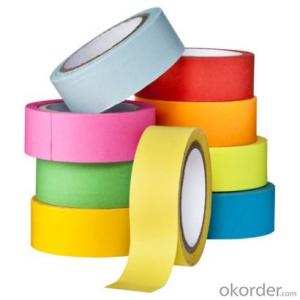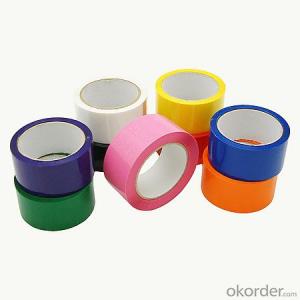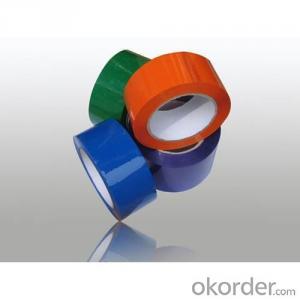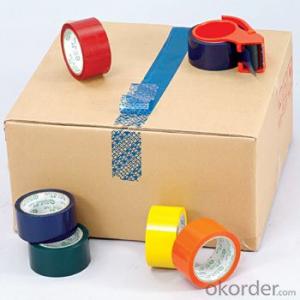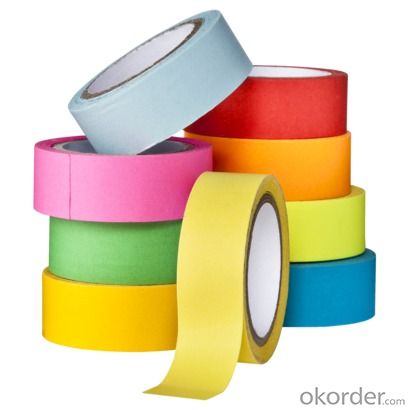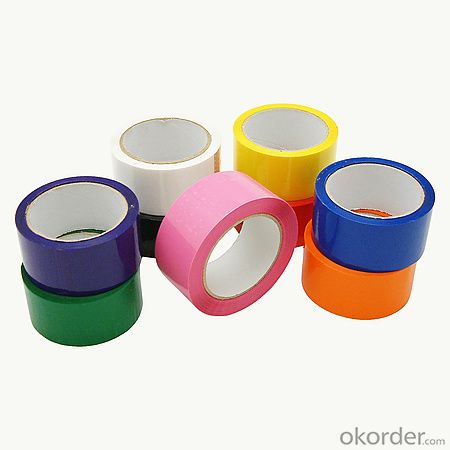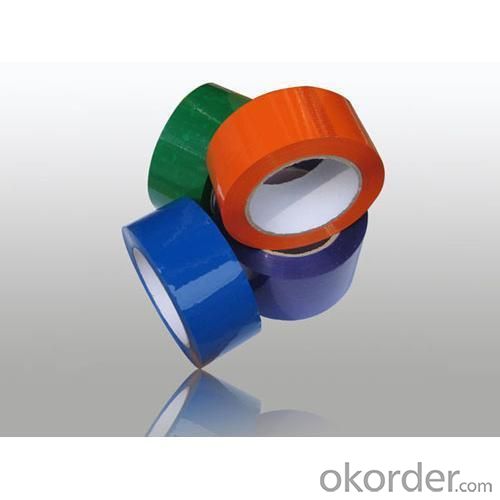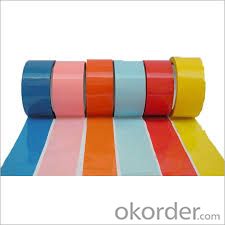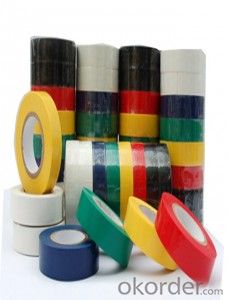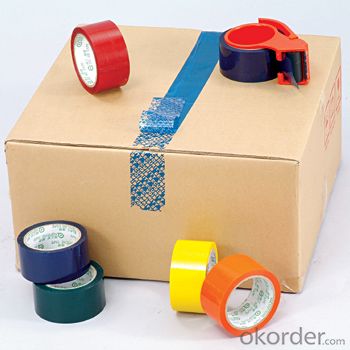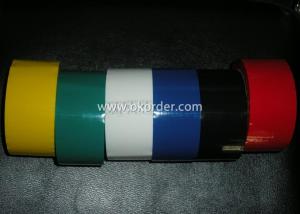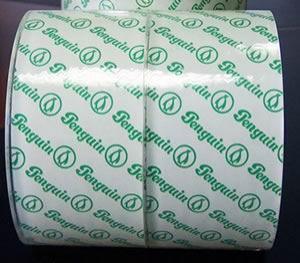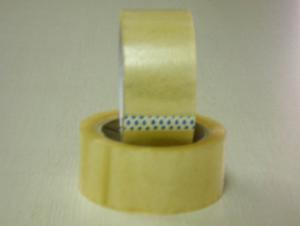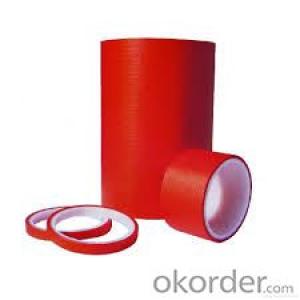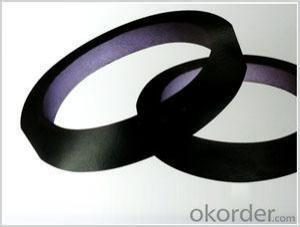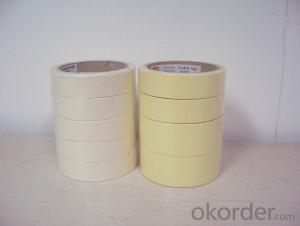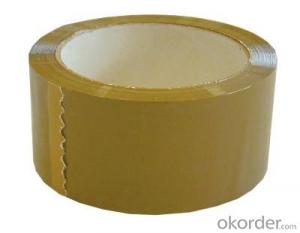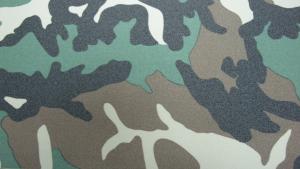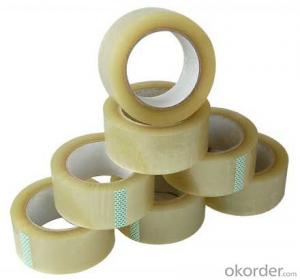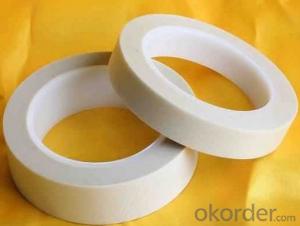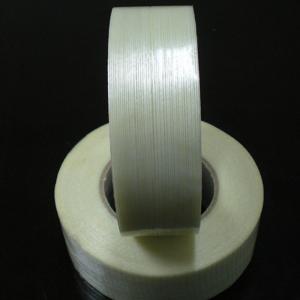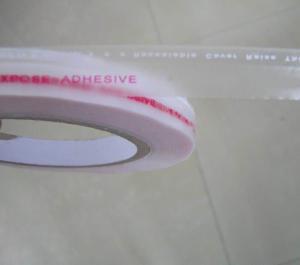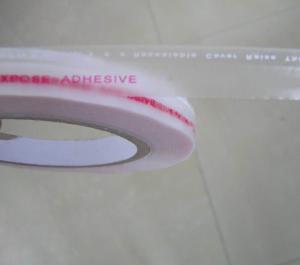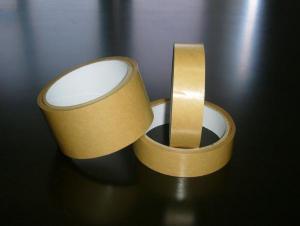Designer Yellow Adhesive Tape for Packing
- Loading Port:
- Shanghai
- Payment Terms:
- TT OR LC
- Min Order Qty:
- 1 roll
- Supply Capability:
- 5000000 roll/month
OKorder Service Pledge
OKorder Financial Service
You Might Also Like
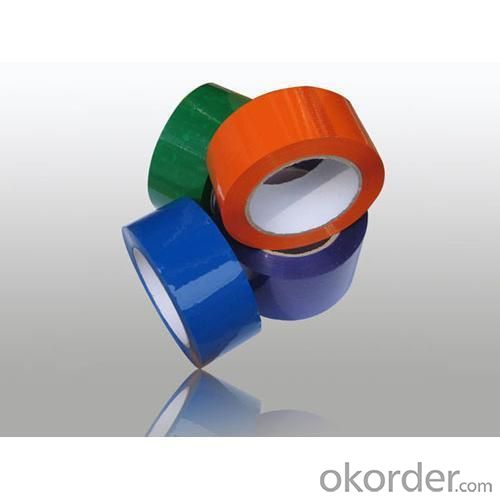
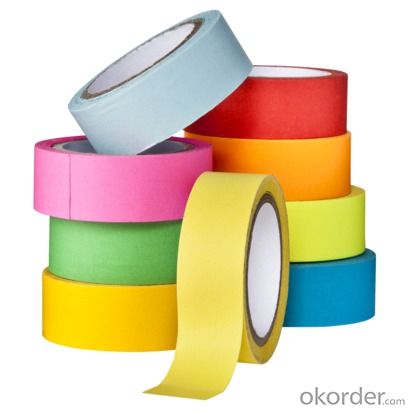

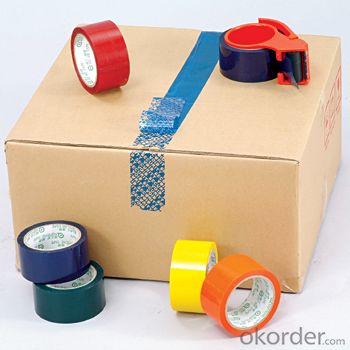
Adhesive Tape Packing Adhesive Tape Yellow Adhesive Tape
1. Description of Adhesive Tape:
1.Carrier: BOPP film
2.Adhesive: Water based acrylic
3.Standard Size: 48mm*66m,50mm*50m,1.28*4000m etc.
4.Color: According to your request
5.Application: Widely sed for etc.
carton sealing and packing,light duty packing,bounding,holding and other office and household use.
2. Advantages of Adhesive Tape:
1 ) Different temperature resistance with good adhesion.
2 ) High tensile strength, good resistance of damage,no residue, eco-friendly.
3 ) Printing logo on paper core and carton mark as customers' need
4 ) SGS, ISO,BV, CTI certificates approved
5)Professional teamwork for orders
6)No.365 on the 2012 Fortune Global 500
7) Professional manufacturer with 31 years experiences of adhesive tapes
Special size,color can be made according to customer's requirement
3. Application of Colored Adhesive Tape:
1) Used for normal masking, such as indoor painting, car painting, car decoration painting.
2) Used in electronic industry and electric appliances for fixing and protection purposes.
3) Mainly designed for ordinary wrapping ,craftwork, lightduty masking.
4) Furniture, appliance automobile /shoes spray painting, color making, decoration and labels.
4. Details of Adhesive Tape:
Material | BOPP film |
Used | Widely sed for etc. carton sealing and packing,light duty packing,bounding,holding and other office and household use. |
Printing | Offer printing |
Color | Red, milky, green, white , yellowish, blue, black, or at will. |
Packaging | 6rolls/shrink,12rolls/shrink,72rolls/ctn,144rolls/ctn. |
MOQ | 20ft container or as you need. |
Payment terms | 30% in advance,70% balance the copy of B/L. |
Delivery time | 15workdays except the affirming date of logo on paper core and carton after receiving the deposit. |
Jumbo rolls size
| 1260mm*1800m, 1260mm*1000m |
Width | 3mm~1260mm normal width:12mm,18mm,24mm,36mm
|
Length | 10m~1800m normal length: 20m,33m,50m,100m |
Port | Shenzhen |
Certifications | ISO.9001.2008. and SGS. |
Certification:

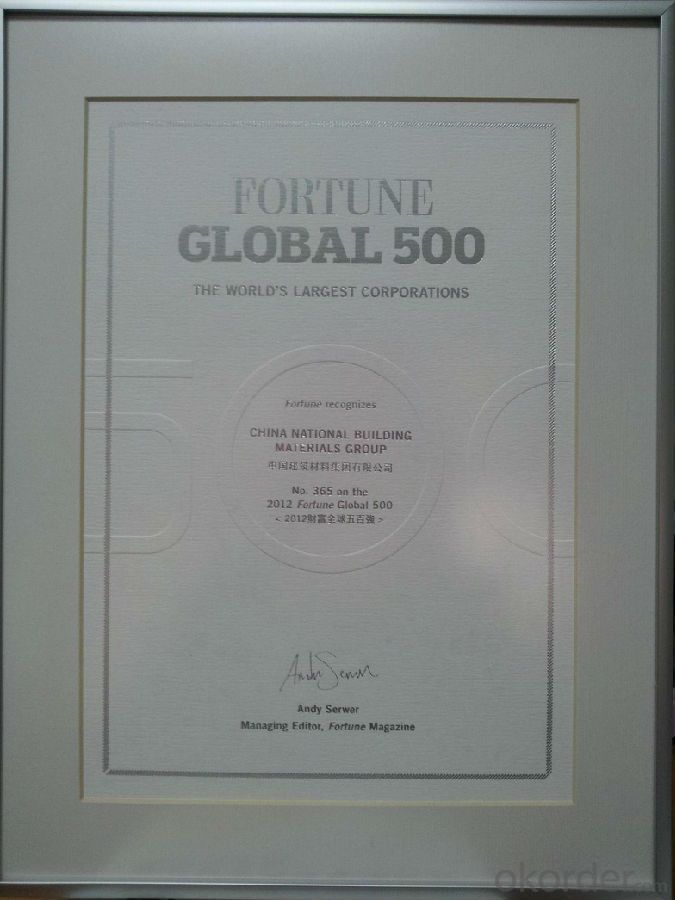
- Q: The tape is very loud and loud when it is packed. Would you like to ask me if I have sold silent tape? Or silent tape? Where can I sell it? Thank you
- This silent tape is not available at the moment. If you want a sound spot, try a sticky tape!
- Q: Can packaging tape be used for sealing packages with electronic components?
- Indeed, packaging tape possesses the capability to seal packages containing electronic components effectively. Its purpose is to furnish packages with a sturdy and long-lasting seal, safeguarding the contents from external factors like moisture, dust, and physical harm. When sealing packages that house electronic components, it becomes crucial to verify the tape's strength in order to maintain package integrity and offer sufficient protection. Moreover, it is advisable to employ anti-static packaging tape exclusively created for electronic components, as this type aids in the dissipation of static electricity and serves as a preventive measure against potential harm to delicate electronics.
- Q: Can packaging tape be used for sealing gardening or outdoor equipment?
- Yes, packaging tape can be used for sealing gardening or outdoor equipment. It provides a strong adhesive bond and can effectively seal boxes or other packaging materials used for storing or transporting gardening or outdoor equipment. However, it is important to consider the durability and weather resistance of the tape to ensure it withstands outdoor conditions.
- Q: What are the considerations for using packaging tape on corrugated cardboard boxes?
- There are several factors to consider when using packaging tape on corrugated cardboard boxes. Firstly, it is crucial to choose the appropriate type of tape for the job. Acrylic, hot melt, and natural rubber adhesive tape are all available options, each with its own strengths and weaknesses. Therefore, it is vital to select a tape that offers the necessary strength and durability to secure the cardboard boxes effectively. Moreover, the width and thickness of the tape should be taken into account. The tape's width should be sufficient to cover the box's seams and edges, ensuring a secure seal. Similarly, the tape's thickness should be suitable for the weight and contents of the box. Heavier items may require thicker tape to provide proper support and prevent damage during transportation. Another consideration is the application method. It is crucial to apply the packaging tape evenly and tightly to the cardboard boxes to prevent them from becoming loose or opening during transport. Using a tape dispenser or applicator can assist in achieving a consistent application. Additionally, the conditions under which the cardboard boxes will be handled and transported should be considered. If the boxes will be exposed to extreme temperatures, humidity, or rough handling, it might be necessary to use stronger or specialized packaging tape that can withstand these conditions. This will ensure that the tape remains intact and provides the necessary protection for the box's contents. Lastly, the removal of the packaging tape should be taken into account. If the boxes need to be opened and resealed multiple times, it might be beneficial to use a tape that offers easy and clean removal without leaving residue or damaging the cardboard surface. This will help maintain the box's integrity and make it easier to reuse or recycle the corrugated cardboard. In conclusion, when using packaging tape on corrugated cardboard boxes, it is important to consider factors such as the type, width, and thickness of the tape, as well as the application method. The conditions under which the boxes will be handled should also be taken into account, and the removal of the tape should be considered if the boxes require multiple openings. By considering these factors, one can ensure that the packaging tape provides a secure and reliable seal for the corrugated cardboard boxes.
- Q: When the box is sealed, the tape is very noisy and very harsh. What shall I do?
- Because the peeling force is quite light, the friction is small, so there is no sound, and the ordinary adhesive tape will be noisy when it is torn!Also called peeling tape, some
- Q: I'd like to know the specifications of the sealing tape. How do you see it? (the following two examples) product name: sealing tape product type: 2.5 inch product specifications: 57mm*80 code (8.5mm thick) weight: about 0.145KG the price for volume: Specifications: code number 48mm*150 meters *40u flesh 20mm here refers to what? I know that 40U means stickiness, so how do I see that?
- As for the latter 40 mu m (micron), not refers to viscous, but refers to BOPP original film + adhesive layer of the total thickness, that is, the thickness of the tape.
- Q: Can packaging tape be used for sealing packages with automotive parts or accessories?
- Yes, packaging tape can be used for sealing packages with automotive parts or accessories. Packaging tape is designed to securely seal packages, and it can effectively hold together packages containing automotive parts or accessories. It provides a strong adhesive bond, ensuring that the package remains sealed during transportation or storage. Additionally, packaging tape is often resistant to moisture, which is important when shipping automotive parts or accessories that may be sensitive to water damage.
- Q: How does packaging tape perform in freezing temperatures?
- Packaging tape typically performs well in freezing temperatures as it is designed to withstand a wide range of temperatures. However, it is important to ensure that the tape is applied and adhered properly to ensure its effectiveness in cold conditions.
- Q: How does packaging tape perform in extreme weather conditions?
- Packaging tape is designed to retain its performance even in the harshest weather conditions. Typically crafted from durable materials like polypropylene or reinforced paper, it boasts resistance to moisture, heat, and cold. During scorching weather, packaging tape remains stable and steadfast, refusing to melt or lose its adhesion. Its adhesive properties are specifically formulated to endure high temperatures, providing a firm grip on any surface it is applied to. By doing so, it effectively prevents packages from opening or sustaining damage during transportation or storage. Similarly, in freezing conditions, packaging tape maintains its flexibility and avoids becoming brittle. Its adhesive strength remains intact, enabling it to adhere to a variety of surfaces even when faced with freezing temperatures. This is crucial in ensuring that packages stay securely sealed and safeguarded against any external elements. Furthermore, packaging tapes frequently possess UV resistance, allowing them to withstand extended exposure to the sun without deterioration or discoloration. This proves highly advantageous for packages stored or transported outdoors, as the tape remains structurally sound and continues to provide a robust seal. In conclusion, packaging tape is meticulously engineered to excel in extreme weather conditions. It offers durability, resilience, and dependable adhesion, guaranteeing that packages remain securely sealed and protected, irrespective of the temperature or weather conditions they encounter.
- Q: Is packaging tape safe for use on photos or artwork?
- Yes, packaging tape is safe for use on photos or artwork as long as it is acid-free and archival quality tape. This type of tape will not harm or damage the photos or artwork over time.
Send your message to us
Designer Yellow Adhesive Tape for Packing
- Loading Port:
- Shanghai
- Payment Terms:
- TT OR LC
- Min Order Qty:
- 1 roll
- Supply Capability:
- 5000000 roll/month
OKorder Service Pledge
OKorder Financial Service
Similar products
Hot products
Hot Searches
Related keywords
